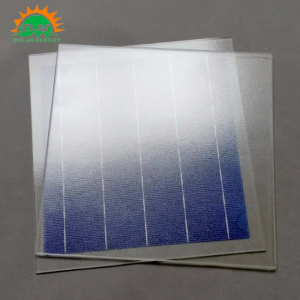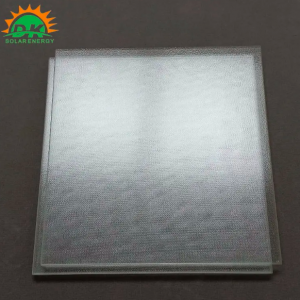Welcome to our blog, where we explore the synergy between technology and sustainability. Today we take a closer look at the fascinating world of solar glass, an innovative solution that promises to revolutionize the way we consume energy. As we embark on the journey towards a cleaner, greener future, solar glass is a game changer, seamlessly integrating renewable energy generation into our daily lives. Join us as we uncover the wonders and potential of this visionary technology.
Uncovering the potential of solar glass
Solar glass, also known as photovoltaic glass or transparent solar panels, is an exciting development in the renewable energy sector. Solar glass is a marvel of technological advancement that seamlessly integrates solar cells into traditional glass, turning ordinary windows, facades and even digital displays into renewable energy.
While traditional solar panels have a unique appearance and are limited to specialized installations, solar glass offers a discreet and beautiful solution. It brings us one step closer to a world where energy production is seamlessly integrated into the built environment, enhancing sustainability without compromising design.
Main applications and advantages
1. The architecture of the future: Integrating solar glass into building materials opens up countless possibilities. Skylights, windows and facades can now double as generators, reducing reliance on external lighting sources and powering various appliances within the building. Not only does this innovation reduce carbon emissions, it can also significantly reduce energy costs in the long term.
2. Transportation revolution: Solar glass also has huge potential to revolutionize the transportation industry. Imagine a vehicle with a solar glass roof that uses solar energy to power onboard electronics or even supplement propulsion systems. This breakthrough could drastically reduce carbon emissions from cars, buses and trains while moving us towards a sustainable transport future.
3. Smartphones and Wearables: As people’s reliance on portable electronic devices continues to increase, integrating solar glass into phones or smartwatches can help us solve long-standing battery life issues. A solar glass cover or screen can harness the power of the sun to charge your device, improving battery performance and reducing the need for frequent charging.
4. Digital signage and public displays: As our cities become increasingly digital, solar glass can serve a dual purpose by providing advertising space and generating electricity. Digital billboards, bus stop shelters and city facilities can all be retrofitted with solar glass, making them self-sustaining and environmentally friendly.
Overcoming Adoption Challenges
Despite the huge potential of solar glass, obstacles remain on the road to widespread adoption. Currently, the efficiency of solar glass lags behind that of traditional solar panels, and the manufacturing process is more complex. However, ongoing research and development is driving innovation to overcome these challenges and push the boundaries of efficiency, cost-effectiveness and durability.
Additionally, marketing and promotion of solar glass needs to emphasize long-term benefits and return on investment for businesses and households. An important aspect is to eliminate misconceptions about solar glass, such as reduced transparency or compromised aesthetics. By showcasing success stories and inspiring case studies, we can increase awareness and demand for this remarkable technology.
in conclusion
Solar glass represents a paradigm shift in our approach to renewable energy generation. It blurs the lines between sustainability and functionality, beckoning to a future where buildings, vehicles and everyday objects can generate clean, green energy seamlessly and unobtrusively. As technology continues to evolve, businesses, policymakers and consumers must embrace this extraordinary innovation to achieve a sustainable energy revolution. Let’s work together to realize the full potential of solar glass and pave the way to a brighter, more sustainable future for all.
Post time: Nov-24-2023


